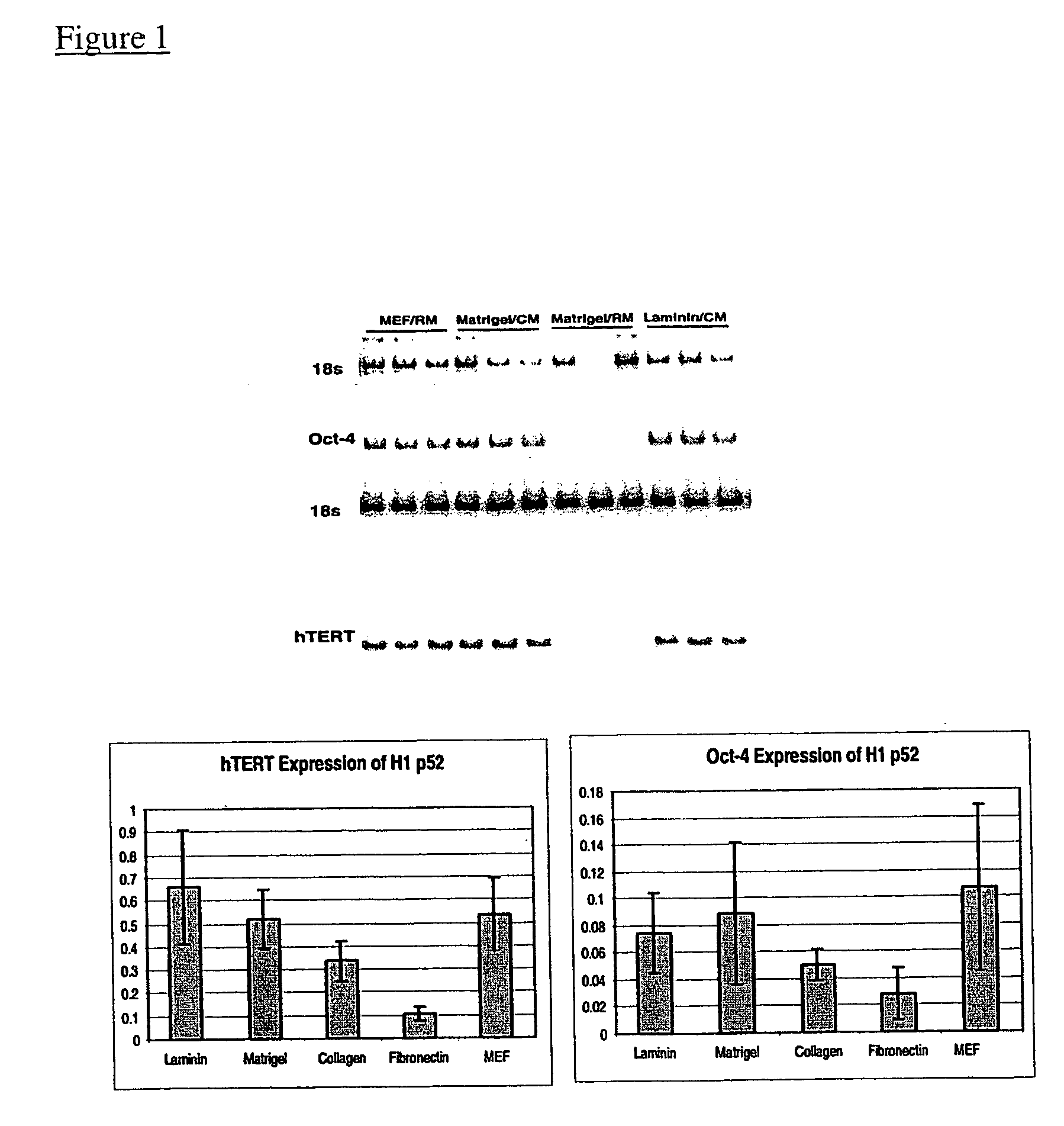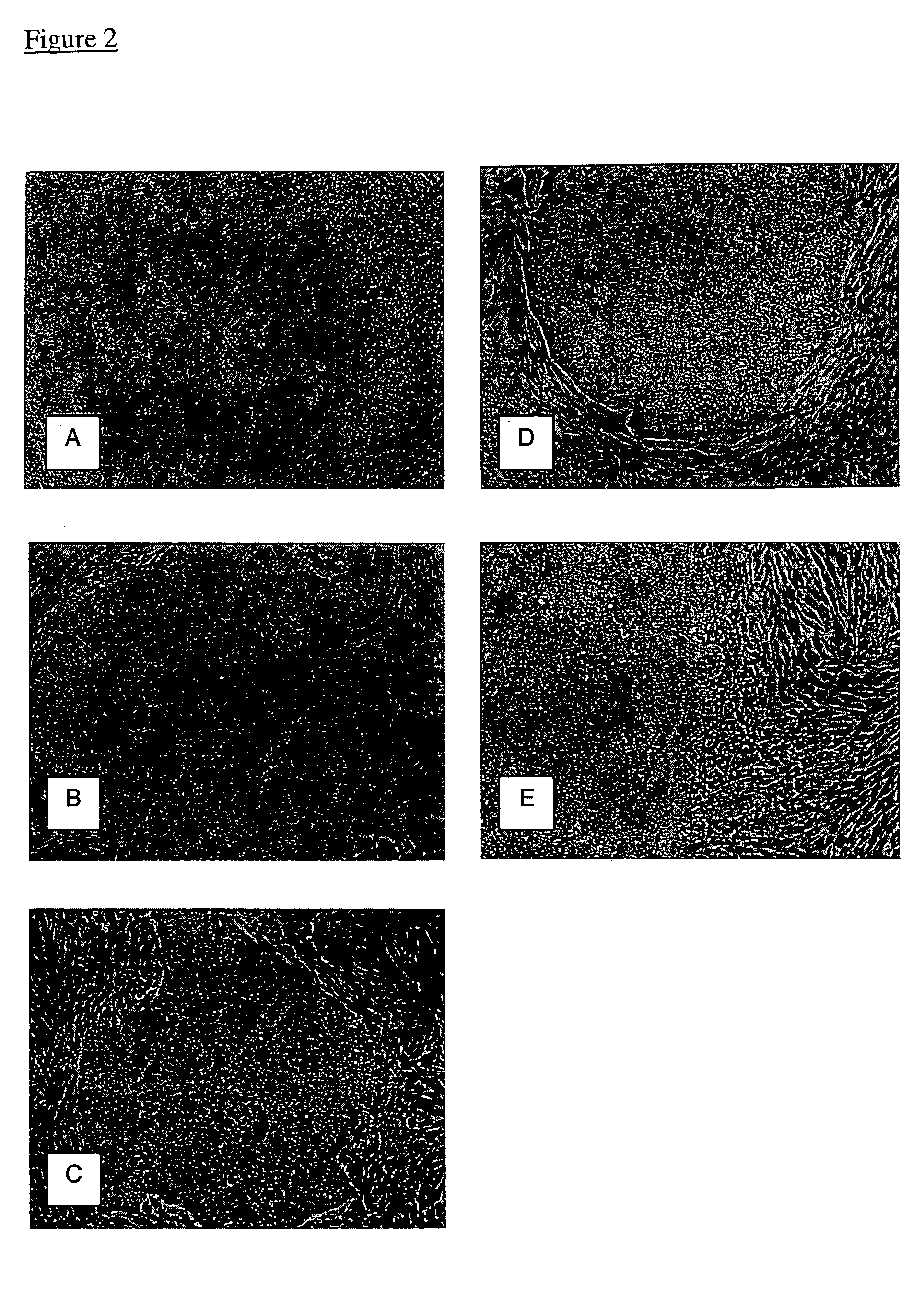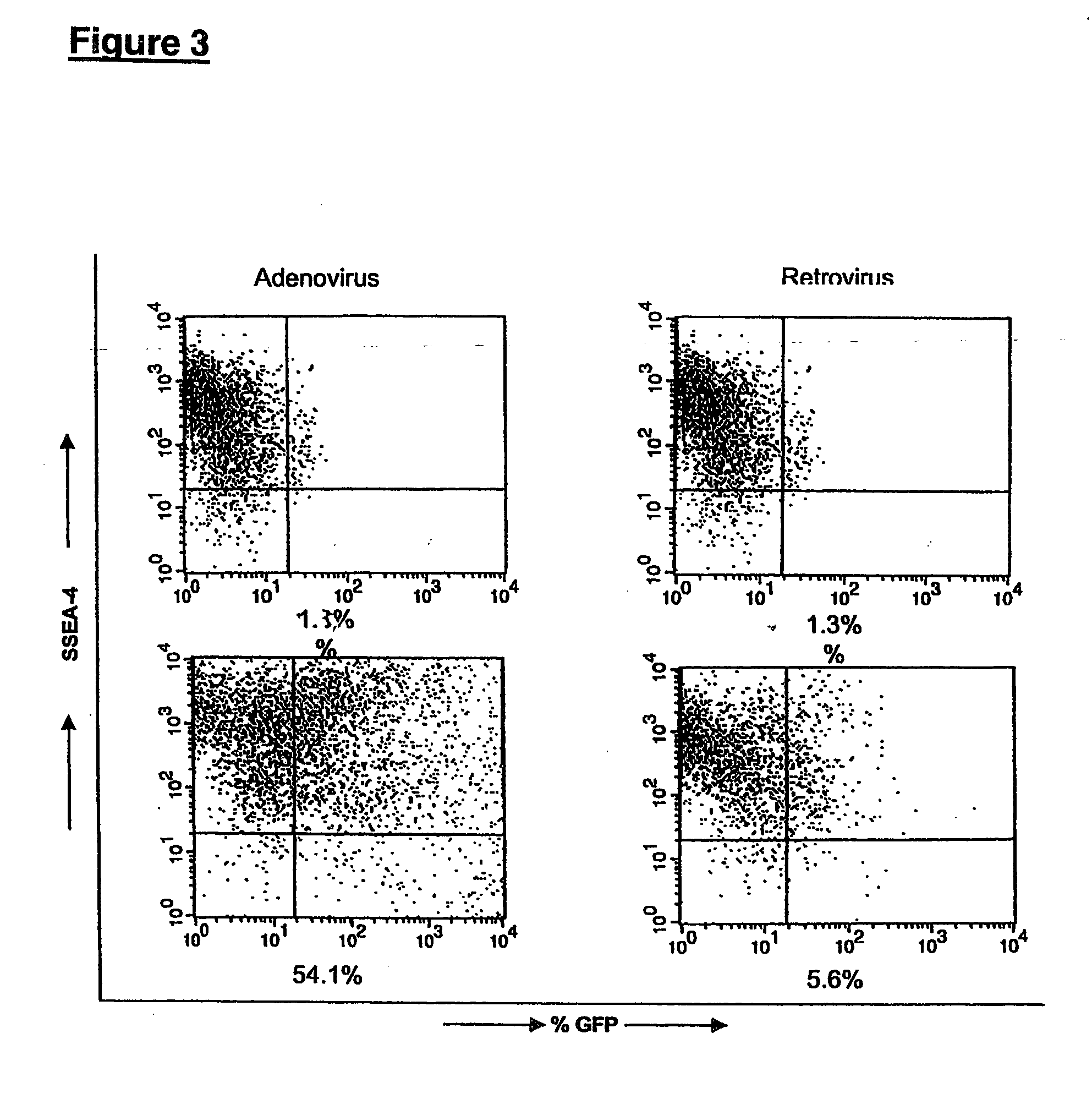Embryonic stem cells having genetic modifications
a technology genetic modifications, applied in the field of embryonic stem cells having genetic modifications, can solve the problems of significant challenge to the usual methods of making genetically altered cells, more difficult to grow and manipulate than mouse cells, etc., and achieve the effect of challenging growth and manipulation
- Summary
- Abstract
- Description
- Claims
- Application Information
AI Technical Summary
Benefits of technology
Problems solved by technology
Method used
Image
Examples
example 1
Growing hES Cells in the Absence of Feeder Cells
[0096] Undifferentiated hES cells isolated on primary mouse embryonic feeder cells were propagated in the absence of feeder cells. The culture wells were coated with Matrigel®, and the cells were cultured in the presence of conditioned nutrient medium obtained from a culture of irradiated primary fibroblasts.
Preparation of Conditioned Media (CM) From Primary Mouse Embryonic Fibroblasts (mEF):
[0097] Fibroblasts were harvested from T150 flasks by washing once with Ca++ / Mg++ free PBS and incubating in 1.5-2 mL trypsin / EDTA (Gibco) for about 5 min. After the fibroblasts detached from the flask, they were collected in mEF media (DMEM+10% FBS). The cells were irradiated at 4000 rad (508 sec at 140 kV: shelf setting 6 in a Torrex generator), counted and seeded at about 55,000 cells cm−2 in mEF media (525,000 cells / well of a 6 well plate). After at least 4 hours the media were exchanged with SR containing ES media, using 3-4 mL per 9.6 cm ...
example 2
Growing hES Cells in Fresh Medium
[0106] Subsequent experiments investigated how different growth factors influence the proliferation and maintenance of undifferentiated hES cells using medium that had not previously been conditioned.
[0107] hES cells passaged 20 times in conditioned medium were weaned onto an alternative medium designed for proliferation of human hematopoietic cells. X-VIVO™ 10 expansion medium was obtained from Biowhittaker; QBSF™-60 was obtained from Quality Biological Inc. The X-VIVO™ 10 formulation contains pharmaceutical grade human albumin, recombinant human insulin and pasteurized human transferrin. Exogenous growth factors, artificial stimulators of cellular proliferation or undefined supplements are not included in the X-VIVO™ 10 medium. They are also devoid of any protein-kinase C stimulators. QBSF™-60 is a serum-free formulation that contains recombinant or pasteurized human proteins. For use in these experiments, the X-VIVO™ 10 medium was supplemented w...
example 3
Genetic Alteration of hES Cells on mEF Feeder Layer
[0112] This example provides conditions for introducing genetic alterations into hES cells grown on primary mEFs as already described. Before transfecting, hES cells were removed from the feeder layer with collagenase (˜200 units / mL), suspended in a final volume of 18 mL, and plated at 3 mL / well in 6 well plates pre-coated with gelatin and primary mEF feeder cells.
[0113] The replated cells were then tested with different transfection systems, including: Mammalian Transfection Kit (CaPO4 and DEAE reagents), Stratagene cat # 200285; TransIT-LT1 Mirus (Panvera), cat # MIR 2310; Polybrene (Sigma); Poly-L-Lysine (Sigma); Superfect™ (Qiagen); Effectene™ (Qiagen); Lipofectin™ (Life Technologies); Lipofectamine (differs from Lipofectamine 2000™) (Life Technologies); Cellfectin™ (Life Technologies); DMRIE-C (Life Technologies); Lipofectamine 2000 (Life Technologies); and electroporation using BioRad™ Gene pulser.
[0114] Under the condition...
PUM
| Property | Measurement | Unit |
|---|---|---|
| Fraction | aaaaa | aaaaa |
| Fraction | aaaaa | aaaaa |
Abstract
Description
Claims
Application Information
 Login to View More
Login to View More - R&D
- Intellectual Property
- Life Sciences
- Materials
- Tech Scout
- Unparalleled Data Quality
- Higher Quality Content
- 60% Fewer Hallucinations
Browse by: Latest US Patents, China's latest patents, Technical Efficacy Thesaurus, Application Domain, Technology Topic, Popular Technical Reports.
© 2025 PatSnap. All rights reserved.Legal|Privacy policy|Modern Slavery Act Transparency Statement|Sitemap|About US| Contact US: help@patsnap.com



